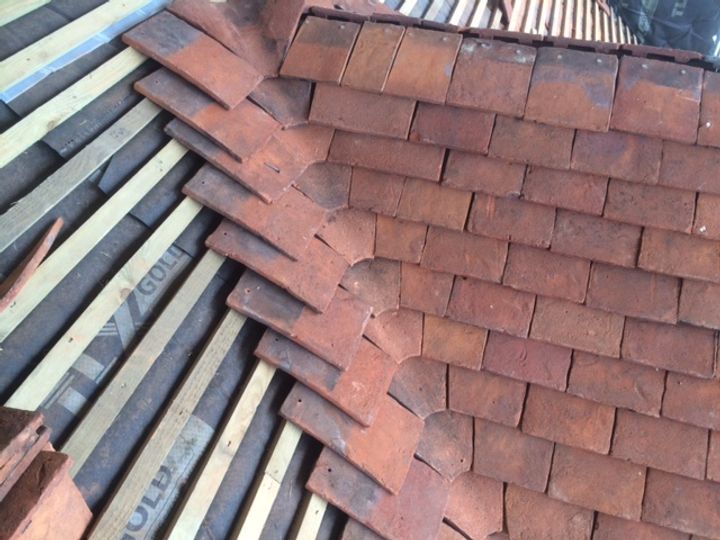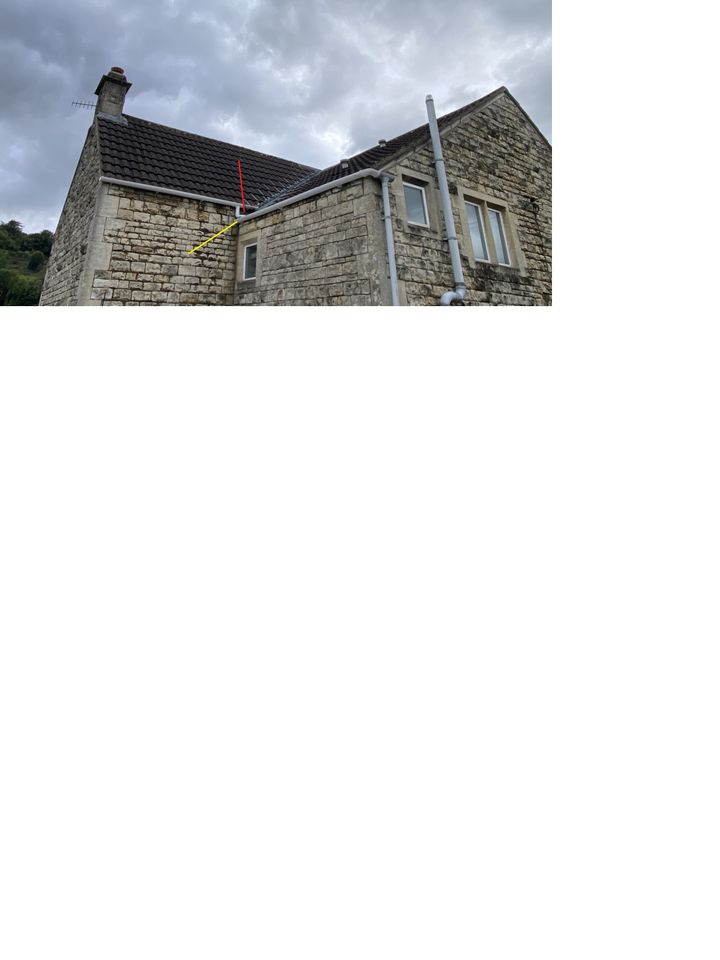I need a new roof How do I specify the valleys? Dry systems?
Discussion
My house roof has two valleys that leak like a sieve. The felt has also failed in many places. Hence I need a new roof. I'd say it's 30-40 years old.
Now it is easy enough to get quotes for a new roof but I am particularly fussy about how the valleys are re-done. The reason being is that I have had numerous roofers over the year try to fix the leaks there but all have failed. It seems to me that the cut tiles either side of the valley are too far apart and rain water seems to either track under the tile (where the mortar is between the tile and lead in the valley) or wash straight across and under the mortar on the other side. Numerous roofers have replaced the mortar. My view is the tiles need to be much closer together above the valley which would allow more mortar to be under the cut tiles where they meet the valley.
Anyway my question really is I am hearing about dry roofing systems where there is no mortar under ridge tiles which I believe last longer as there is no mortar to fail. Does such a dry system exist for valleys? If so is it any good?
What do I ask roofers for to get dry valleys and dry ridges? I appreciate they can advise me but I'd rather at least have a starting point in what to ask for. Many thanks.
Now it is easy enough to get quotes for a new roof but I am particularly fussy about how the valleys are re-done. The reason being is that I have had numerous roofers over the year try to fix the leaks there but all have failed. It seems to me that the cut tiles either side of the valley are too far apart and rain water seems to either track under the tile (where the mortar is between the tile and lead in the valley) or wash straight across and under the mortar on the other side. Numerous roofers have replaced the mortar. My view is the tiles need to be much closer together above the valley which would allow more mortar to be under the cut tiles where they meet the valley.
Anyway my question really is I am hearing about dry roofing systems where there is no mortar under ridge tiles which I believe last longer as there is no mortar to fail. Does such a dry system exist for valleys? If so is it any good?
What do I ask roofers for to get dry valleys and dry ridges? I appreciate they can advise me but I'd rather at least have a starting point in what to ask for. Many thanks.
Given the previous problem and your lack of knowledge about roofing do you really want to be the one providing the design and then responsible if the repairs don’t fix the issue?
If it’s as problematic and potentially complex as described, then I’d suggest getting a proper survey form a qualified professional and having them detail the solution and specification for builders to quote against.
If it’s as problematic and potentially complex as described, then I’d suggest getting a proper survey form a qualified professional and having them detail the solution and specification for builders to quote against.
Aluminati’s your man here but there are mortarless(?) options made out of fibreglass, Google dry valley. You can also get traditional open valleys in fibreglass as well, though not sure what their lifespan is, lead will outlast you, your kids, their kids etc. If detailed correctly a traditional lead valley shouldn’t cause problems, if the right up stands and welts are in place: do you have a steeply pitched section of roof adjoining a shallower one, that can cause issues if not done correctly. Also Google ‘Flexim putty’ if you like the idea of a traditional open valley, it’s more flexible than s&c mortar, lead moves around a lot!
Dry valleys are widespread, and have the same check as a correctly fitted lead valley. They’re just easier to fit by the less well trained shall we say.
Me being a complete anal roofer, I fitted tile valleys to mine, but it depends what your coverings are and pitch.

How important are aesthetics? A picture of your current setup would help.
Me being a complete anal roofer, I fitted tile valleys to mine, but it depends what your coverings are and pitch.
How important are aesthetics? A picture of your current setup would help.
Edited by Aluminati on Friday 27th September 19:04
Thanks all.
I am on a budget (to say the least!). Don't care about aesthetics as not visible from the ground, more important is to eradicate leaks for the long term at lowest cost ideally!
Attached is a photo showing one valley general arrangement. The bit of wall where the red line goes to is covered in lead sheet but not very well. This whole area is a mess according to previous roofers as the lead sheets from the valley and up the wall have gaps and don't overlap very well.
Also the bit of gutter where the blue line is fills with muck and every year plants grow there. It is cleared out every year but the same happens every year. All in all that area is a mess and the wall (solid stone 18" thick) gets wet and gets wet inside too (as does the ceiling in that area). amongst the many roofing jobs I had done I had that guttering replaced (you can see its white not grey like the downpipe).
The reason I am asking for advice here is I have had multiple roofers have a go at this roof over the years and nothing has fixed it. So when I pay for a new roof I need to be sure what they do actually works else it is more cash down the drain. What can I say I need that will resolve my leaky valleys once and for all?
Many thanks.

I am on a budget (to say the least!). Don't care about aesthetics as not visible from the ground, more important is to eradicate leaks for the long term at lowest cost ideally!
Attached is a photo showing one valley general arrangement. The bit of wall where the red line goes to is covered in lead sheet but not very well. This whole area is a mess according to previous roofers as the lead sheets from the valley and up the wall have gaps and don't overlap very well.
Also the bit of gutter where the blue line is fills with muck and every year plants grow there. It is cleared out every year but the same happens every year. All in all that area is a mess and the wall (solid stone 18" thick) gets wet and gets wet inside too (as does the ceiling in that area). amongst the many roofing jobs I had done I had that guttering replaced (you can see its white not grey like the downpipe).
The reason I am asking for advice here is I have had multiple roofers have a go at this roof over the years and nothing has fixed it. So when I pay for a new roof I need to be sure what they do actually works else it is more cash down the drain. What can I say I need that will resolve my leaky valleys once and for all?
Many thanks.
Two valleys on one of my barns leak, like you say a few attempts at repairing have been unsuccessful.
In the end I got a roofer I trust to come and look and his advice was to take all of the existing valleys out and replace with new. This involves removing tiling along them and replacing with brand new valleys and then making good,
Our valleys are tiled to the edge and then the actual valley is a metal vee shape that runs the water away to the gutter. So all new aluminium valleys are to be installed for us.
It is a little more expensive that trying another repair but I am confident that this will fix it.
In the end I got a roofer I trust to come and look and his advice was to take all of the existing valleys out and replace with new. This involves removing tiling along them and replacing with brand new valleys and then making good,
Our valleys are tiled to the edge and then the actual valley is a metal vee shape that runs the water away to the gutter. So all new aluminium valleys are to be installed for us.
It is a little more expensive that trying another repair but I am confident that this will fix it.
I can’t really see the valley very well in the pics but it looks like it’s been subjected to numerous poor repairs.
Chances are the tiles are fine and it just needs the valleys stripping out , new lead dressing in and re tiling with clean new or reclaimed tiles .
It’s also better to back bed the valley tiles rather than point up flush , doesn’t look quite as finished but lets the water run into the lead valley and not into mortar pointing .
Chances are the tiles are fine and it just needs the valleys stripping out , new lead dressing in and re tiling with clean new or reclaimed tiles .
It’s also better to back bed the valley tiles rather than point up flush , doesn’t look quite as finished but lets the water run into the lead valley and not into mortar pointing .
paulwirral said:
I can’t really see the valley very well in the pics but it looks like it’s been subjected to numerous poor repairs.
Chances are the tiles are fine and it just needs the valleys stripping out , new lead dressing in and re tiling with clean new or reclaimed tiles .
It’s also better to back bed the valley tiles rather than point up flush , doesn’t look quite as finished but lets the water run into the lead valley and not into mortar pointing .
"Numerous poor repairs" ... Correct, none of which worked!Chances are the tiles are fine and it just needs the valleys stripping out , new lead dressing in and re tiling with clean new or reclaimed tiles .
It’s also better to back bed the valley tiles rather than point up flush , doesn’t look quite as finished but lets the water run into the lead valley and not into mortar pointing .
Thanks for your advice. I'll note the "back bedding" and see what the roofers I have to quote say. Thanks for the tip.
Gassing Station | Homes, Gardens and DIY | Top of Page | What's New | My Stuff



